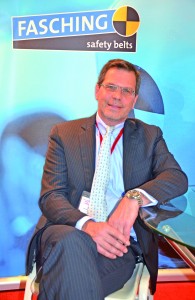
The Fasching Group, founded over three decades ago in Europe, is a leading global supplier of automotive safety belts, wheelchair belts and industrial components mainly for coaches, midi buses, mini buses and vans. Fasching Salzburg GmbH is a reputed name when it comes to automotive safety belts. With strong technological know-how, the company makes 2-point (lap belt), 3-point (lap-shoulder) and special (4- or 5-point and H configuration) safety belts for passenger vehicles, trucks and buses, with focus on static, emergency locking retractor (ELR) and automatic locking retractor (ALR) belts. Fasching has close to 50 per cent market share in the automotive safety belts segment in the European coach industry and is a supplier to leading seat manufacturers in the region.
Fasching, a family-owned company, has its headquarters in Salzburg, Austria. It has strong presence in Europe and works with agents in other countries. “We are an independent company with our own tools and technology and are very flexible in our operations. We have covered the entire European market and have very strong presence in Mexico as well. India is an important market for us, and so we are trying to find a good local partner. We are also looking for partners in other countries, including China, Indonesia, Malaysia, Vietnam, Russia and South America”, says Mr. Harald Peßl, Sales Director – Authorised Office & Member of the Managing Board, Fasching Salzburg GmbH.

Fasching has a manufacturing facility in Hungary, just five km away from the Austrian border. The facility is surrounded by component suppliers to facilitate easy delivery of metal and plastic parts. The advantage of Fasching’s manufacturing system lies in its wide range of commercial solutions which allows it to provide tailor-made solutions to customers. Its technology and manufacturing and logistics processes enable it to produce even the smallest series fast and at a price close to mass-production prices. The company produces around 700,000 to 900,000 safety belts every year, around 20,000 of which are supplied to the Indian market.
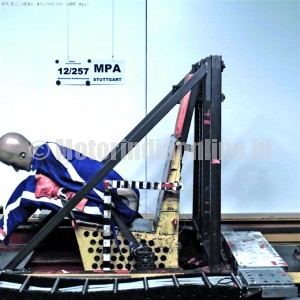
Fasching currently supplies to a leading Indian seat manufacturer, and talks are on with other companies. In India, while passenger vehicles have switched over to the more advanced 3-point safety belts, commercial vehicles are yet to catch up. Static 2-point belts are predominantly used in buses and trucks though the importance of three-point belts is steadily growing. The 3-point belts offer better safety as they protect the entire body as against the 2-point lap belts which do not protect the top half of the body.
“We would like to work with the leading players in the Indian coach industry, with licensed production after we find a local partner. We want to be among the top three suppliers of safety belts and would like to pioneer the 2- and 3-point technology for coaches in India”, adds Mr. Peßl.
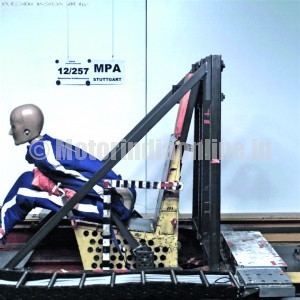
Fasching safety belts correspond to the ECE R 16 regulation and are homologated by accredited institutes after successfully clearing dynamic tests.
Most modern seat belts are stowed on spring-loaded reels called ‘retractors’ equipped with inertial locking mechanisms that stop the belt from extending off the reel during severe deceleration. The purpose of locking retractors is to provide the seated occupant the convenience of some free movement and at the same time offer a method of limiting the movement in the event of a crash. Fasching retractors combine all the possibilities of a specific safety-belt solution for seats with different designs such as full-size or mini, ELR or ALR operation modes, and flex-sensor for adjustable backrests.
In India, discussions are going on for the last few years towards mandating the use of seat belts in inter-city buses. Though safety belts have been mandatory in passenger vehicles, the rate of adoption on road is substantially less. It is quite obvious that if seat belts are mandated for commercial vehicles, effective implementation of the regulation is necessary to make it effective and also ensure passenger and driver safety.
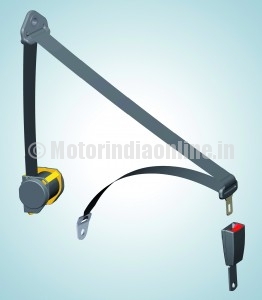
Besides the regular safety belts for cars, buses and trucks, Fasching has developed its own system named SiTEC for the safety of handicapped people in wheelchairs. The wheelchair occupant can use public or private transport with safety features without any limitation or restrictions. In this case, the safety belt system is different from the regular ones. The wheelchair has to be fixed to the floor by a combination of 4 retractors (two in front and two at the rear) to keep it in position even in the case of an accident.
Fasching has also designed and developed, besides belts and retractors, its own ‘fitting’ which is the connection between the belt and the floor for the wheelchair restraint technology.
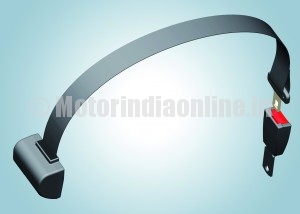 The wheelchair occupant uses a 2-point belt (lap belt), which is attached to the rear retractors of the wheel chair restraint system, in combination with a diagonal belt which is attached to the lap belt. The combination of the lap and diagonal belt is comparable to a 3-point belt which is common in passenger vehicles. The only difference is that the 3-point belt is split into two ‘separate’ belt-systems, one lap and one diagonal belt, in order to have easier access and handling of belts by the wheelchair occupant.
The wheelchair occupant uses a 2-point belt (lap belt), which is attached to the rear retractors of the wheel chair restraint system, in combination with a diagonal belt which is attached to the lap belt. The combination of the lap and diagonal belt is comparable to a 3-point belt which is common in passenger vehicles. The only difference is that the 3-point belt is split into two ‘separate’ belt-systems, one lap and one diagonal belt, in order to have easier access and handling of belts by the wheelchair occupant.
Such systems enhance the safety levels in vehicles as the wheelchair restraint systems conform to ISO 10542. The standard requires, amongst other tests, a dynamic crash tests at 48km/h speed with a 20g deceleration for a wheelchair weighing 85 kg and a anthropomorphic test device (ATD or crash test dummy) weighing 76 kg (a total of more than 160 kg).